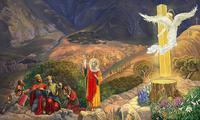The Dawn of Religious Revival Post-1991
The collapse of the Soviet Union in 1991 marked the beginning of a significant religious revival in Georgia. This period was characterized by a resurgence in religious activities and a reclamation of religious identity that had been suppressed during Soviet rule. The Georgian Orthodox Church, an integral part of Georgia's history and identity, experienced a remarkable revival during this time.
Reestablishment of the Georgian Orthodox Church
One of the most significant aspects of the post-Soviet religious revival in Georgia was the restoration and resurgence of the Georgian Orthodox Church. Immediately following the disintegration of the Soviet Union, the Church began to regain its historical position in Georgian society. This period saw the reopening and reconstruction of numerous churches and monasteries across the country, many of which had been closed or repurposed during Soviet rule.
Revival of Religious Practices and Traditions
The post-Soviet era witnessed a dramatic increase in religious observance among the Georgian population. Religious ceremonies and traditions that had been suppressed under Soviet rule were revived with enthusiasm. Major religious holidays, such as Orthodox Easter and Christmas, began to be celebrated openly and widely. The Georgian Orthodox Church played a crucial role in this revival, organizing religious events and encouraging the population to reconnect with their religious heritage.
Influence on Georgian Society and Culture
The religious revival in Georgia had a profound impact on the country's culture and society. Religion, particularly Orthodox Christianity, became a cornerstone of national identity for many Georgians. This period also saw an increase in the number of religious publications, television programs, and educational programs focused on religious studies, further embedding religious values in the cultural fabric of the nation.
Challenges in the Post-Soviet Religious Landscape
While the religious revival brought many positive changes, it also presented challenges. The dominant position of the Georgian Orthodox Church raised concerns about religious pluralism and the rights of religious minorities. Debates around the role of the Church in state affairs and issues of religious tolerance toward minority religions such as Islam and Catholicism became more prominent in public discourse.
Religious Tourism in Post-Soviet Georgia
The religious revival significantly enhanced Georgia's appeal as a destination for religious and cultural tourism. Landmarks like the Svetitskhoveli Cathedral, the Bagrati Cathedral, and the Gelati Monastery, which had regained their status as active religious sites, attracted tourists interested in exploring the country's religious heritage. Religious tours became a significant aspect of Georgia's tourism industry, offering visitors an insight into the country's rich religious history and contemporary religious practices.
Conclusion
The post-Soviet religious revival in Georgia is a pivotal chapter in the country’s history, representing a reawakening of religious identity and practice after decades of suppression. This revival has deeply influenced Georgian society, culture, and even its appeal as a travel destination. It stands as a vivid example of how religion can shape national identity and cultural life in the aftermath of major political and societal shifts.

 Pre-Christian Religions in Georgia
Pre-Christian Religions in Georgia
 Conversion to Christianity in Georgia
Conversion to Christianity in Georgia
 Soviet-era Atheism
Soviet-era Atheism




